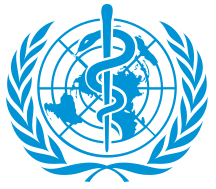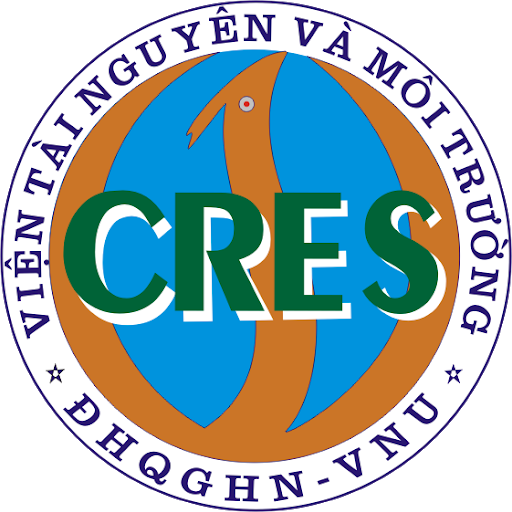
Childhood Obesity Surveillance Initiative (COSI): Tajikistan. Report on the fourth (2016/2017) and fifth (2019) rounds of data collection / World Health Organization. Regional Office for Europe
Tác giả : World Health Organization. Regional Office for Europe
Nhà xuất bản : World Health Organization. Regional Office for Europe
Năm xuất bản : 2023
Chủ đề : 1. Child Health. 2. Nutritional Status. 3. Obesity. 4. Overweight. 5. Public Health Surveillance. 6. Technical documents.
Thông tin chi tiết
| Tóm tắt : | Nutritional surveillance data are essential to effectively design, implement and evaluate policies and strategies aimed at counteracting childhood obesity, which remains an important public health problem in the WHO European Region. The WHO European Childhood Obesity Surveillance Initiative (COSI) was established in 2007 as a systematic process of collection, analysis, interpretation and dissemination of descriptive information for use in monitoring excess bodyweight and in programme planning and evaluation. Tajikistan joined the WHO European COSI study in 2016 (fourth round). This report presents data on the fourth (2016/2017) and fifth (2019) rounds. COSI Tajikistan data collection was performed in five regions of Tajikistan (Districts of Republic Subordination, Dushanbe City, Gorno-Badakhshan Autonomous Oblast, Khatlon and Sughd) following the WHO European COSI study common protocol and data collection procedures. From 153 primary schools, a total of 3318 children aged 7 years were measured in 2016/2017 and 3454 in 2019. The COSI study allows better understanding of the progression of childhood overweight and obesity in each country and provides information on related factors, such as eating habits and patterns of physical activity. COSI Tajikistan should be repeated every three years to monitor trends over time, which is of particular importance given that obesity (1.5% in 2016/2017 and 1.4% in 2019) coexists alongside thinness (4.3% in 2016/2017 and 6.0% in 2018), and to support the country’s need for ongoing or future interventions to promote healthier lifestyles among children and, consequently, ensure better health. x, 31 p. |
Thông tin dữ liệu nguồn
| Thư viện | Ký hiệu xếp giá | Dữ liệu nguồn |
|---|---|---|
 Tổ chức y tế thế giới
Tổ chức y tế thế giới
|
|
https://iris.who.int/handle/10665/365967 |
 Tài liệu điện tử
Tài liệu điện tử 





 Đại học Công nghệ - ĐHQGHN
Đại học Công nghệ - ĐHQGHN  Đại học Giáo dục - ĐHQGHN
Đại học Giáo dục - ĐHQGHN  Đại học khoa học tự nhiên - ĐHQGHN
Đại học khoa học tự nhiên - ĐHQGHN  Đại học Khoa học Xã hội và Nhân văn - ĐHQGHN
Đại học Khoa học Xã hội và Nhân văn - ĐHQGHN  Đại học Kinh tế - ĐHQGHN
Đại học Kinh tế - ĐHQGHN  Đại học Ngoại ngữ - ĐHQGHN
Đại học Ngoại ngữ - ĐHQGHN  Đại học quốc gia Hà Nội
Đại học quốc gia Hà Nội  Đại học Y - Dược - ĐHQGHN
Đại học Y - Dược - ĐHQGHN  Học Viện Hàng Không Việt Nam
Học Viện Hàng Không Việt Nam  Thư viện đại học Cần Thơ
Thư viện đại học Cần Thơ  Thư viện Huyện Bình Chánh - TVKHTH TP.HCM
Thư viện Huyện Bình Chánh - TVKHTH TP.HCM  Thư viện huyện Bình Minh - TV Vĩnh Long
Thư viện huyện Bình Minh - TV Vĩnh Long  Thư viện huyện Bình Tân - TV Vĩnh Long
Thư viện huyện Bình Tân - TV Vĩnh Long  Thư viện Huyện Cần Giờ - TVKHTH TP.HCM
Thư viện Huyện Cần Giờ - TVKHTH TP.HCM  Thư viện Huyện Củ Chi - TVKHTH TP.HCM
Thư viện Huyện Củ Chi - TVKHTH TP.HCM  Thư viện Huyện Hóc Môn - TVKHTH TP.HCM
Thư viện Huyện Hóc Môn - TVKHTH TP.HCM  Thư viện huyện Long Hồ - TV Vĩnh Long
Thư viện huyện Long Hồ - TV Vĩnh Long  Thư viện huyện Mang Thít - TV Vĩnh Long
Thư viện huyện Mang Thít - TV Vĩnh Long  Thư viện Huyện Nhà Bè - TVKHTH TP.HCM
Thư viện Huyện Nhà Bè - TVKHTH TP.HCM  Thư viện huyện Tam Bình - TV Vĩnh Long
Thư viện huyện Tam Bình - TV Vĩnh Long  Thư viện huyện Trà Ôn - TV Vĩnh Long
Thư viện huyện Trà Ôn - TV Vĩnh Long  Thư viện Khoa học Tổng hợp TP.HCM
Thư viện Khoa học Tổng hợp TP.HCM  Thư viện quận 1 - TVKHTH TP.HCM
Thư viện quận 1 - TVKHTH TP.HCM  Thư viện quận 10 - TVKHTH TP.HCM
Thư viện quận 10 - TVKHTH TP.HCM  Thư viện quận 11 - TVKHTH TP.HCM
Thư viện quận 11 - TVKHTH TP.HCM  Thư viện quận 12 - TVKHTH TP.HCM
Thư viện quận 12 - TVKHTH TP.HCM  Thư viện quận 2 - TVKHTH TP.HCM
Thư viện quận 2 - TVKHTH TP.HCM  Thư viện quận 3 - TVKHTH TP.HCM
Thư viện quận 3 - TVKHTH TP.HCM  Thư viện quận 4 - TVKHTH TP.HCM
Thư viện quận 4 - TVKHTH TP.HCM  Thư viện quận 5 - TVKHTH TP.HCM
Thư viện quận 5 - TVKHTH TP.HCM  Thư viện quận 6 - TVKHTH TP.HCM
Thư viện quận 6 - TVKHTH TP.HCM  Thư viện quận 7 - TVKHTH TP.HCM
Thư viện quận 7 - TVKHTH TP.HCM  Thư viện quận 8 - TVKHTH TP.HCM
Thư viện quận 8 - TVKHTH TP.HCM  Thư viện quận Bình Tân - TVKHTH TP.HCM
Thư viện quận Bình Tân - TVKHTH TP.HCM  Thư viện quận Bình Thạnh - TVKHTH TP.HCM
Thư viện quận Bình Thạnh - TVKHTH TP.HCM  Thư viện quận Gò Vấp - TVKHTH TP.HCM
Thư viện quận Gò Vấp - TVKHTH TP.HCM  Thư viện quận Phú Nhuận - TVKHTH TP.HCM
Thư viện quận Phú Nhuận - TVKHTH TP.HCM  Thư viện quận Tân Bình - TVKHTH TP.HCM
Thư viện quận Tân Bình - TVKHTH TP.HCM  Thư viện quận Tân Phú - TVKHTH TP.HCM
Thư viện quận Tân Phú - TVKHTH TP.HCM  Thư viện Quốc gia Việt Nam
Thư viện Quốc gia Việt Nam  Thư viện thành phố Thủ Đức (cơ sở 1) - TVKHTH TP.HCM
Thư viện thành phố Thủ Đức (cơ sở 1) - TVKHTH TP.HCM  Thư viện thành phố Thủ Đức (cơ sở 2) - TVKHTH TP.HCM
Thư viện thành phố Thủ Đức (cơ sở 2) - TVKHTH TP.HCM  Thư Viện Tỉnh An Giang
Thư Viện Tỉnh An Giang  Thư viện tỉnh Vĩnh Long
Thư viện tỉnh Vĩnh Long  Trung tâm giáo dục quốc phòng và An ninh - ĐHQGHN
Trung tâm giáo dục quốc phòng và An ninh - ĐHQGHN  Trung tâm Hỗ trợ Sinh viên - ĐHQGHN
Trung tâm Hỗ trợ Sinh viên - ĐHQGHN  Trường Đại học Luật - ĐHQGHN
Trường Đại học Luật - ĐHQGHN  Trường Khoa học liên ngành và nghệ thuật - ĐHQGHN
Trường Khoa học liên ngành và nghệ thuật - ĐHQGHN  Trường Quản trị và Kinh doanh - ĐHQGHN
Trường Quản trị và Kinh doanh - ĐHQGHN  Viện Công nghệ Thông tin - ĐHQGHN
Viện Công nghệ Thông tin - ĐHQGHN  Viện Đảm bảo chất lượng giáo dục - ĐHQGHN
Viện Đảm bảo chất lượng giáo dục - ĐHQGHN  Viện Quốc tế Pháp ngữ - ĐHQGHN
Viện Quốc tế Pháp ngữ - ĐHQGHN  Viện Tài nguyên và Môi trường - ĐHQGHN
Viện Tài nguyên và Môi trường - ĐHQGHN  Viện Vi sinh vật và Công nghệ Sinh học - ĐHQGHN
Viện Vi sinh vật và Công nghệ Sinh học - ĐHQGHN  Viện Việt Nam học và Khoa học phát triển - ĐHQGHN
Viện Việt Nam học và Khoa học phát triển - ĐHQGHN